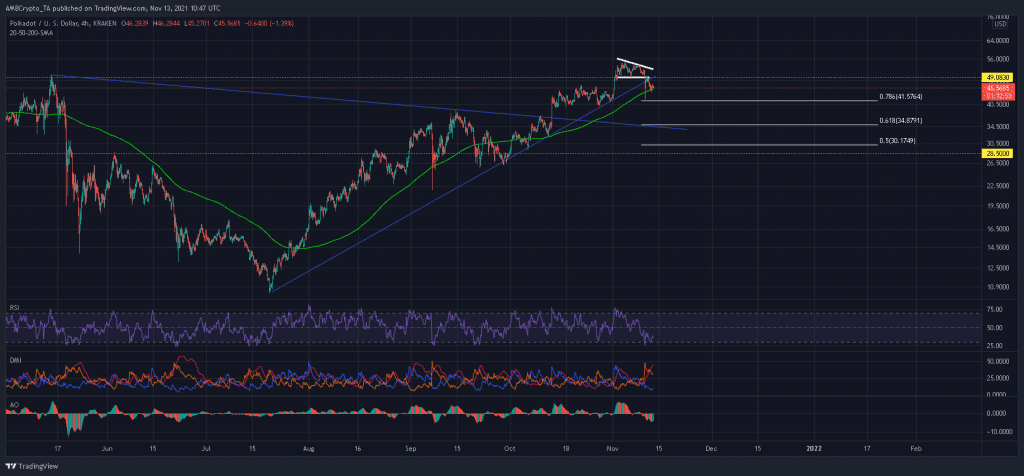Polkadot slipped below its lower trendline following a descending triangle breakdown. As a result, DOT has shed over 11% of its value over the last seven days and was the coin that made most weekly losses, among the top the coins by market cap.
On the charts, DOT was being help up by the 4-hour 200-SMA (green) but remained exposed to an extended sell-off following bearish signals along the Awesome Oscillator and MACD. At the time of writing, DOT traded at $45.5, down by 1% over the last 24 hours.
Polkadot 4-hour Chart
DOT’s descending triangle took shape after record levels were breached at $55. Once a breakdown was observed from the bearish pattern, DOT declined by nearly 14% and breached its bottom trendline which has had five points of contacts since July.
With short-selling now a threat, DOT could weaken below its 200-SMA (green) and shift to the 78.6% Fibonacci level- a region which clashed with the daily 50-SMA (not shown). Should the sell-off continue, the confluence of the 50% Fibonacci level and an upper sloping trendline could provide base for a bullish reversal.
Reasoning
Lower peaks along the Awesome Oscillator were not encouraging for those expecting an immediate comeback to a new ATH. However, the next low would determine whether a bullish twin peak setup could come to light. The favorable setup would provide some buy signals should it develop over the coming sessions.
Meanwhile, the DMI maintained its bearish outlook and an ADX reading of 44 indicated a strong directional trend. Now the 4-hour RSI was in oversold territory and the same could trigger some gains, but when compared to the daily RSI which was about to slip beneath its half-line, some more downside was quite possible.
Conclusion
DOT could continue to trade south following bearish cues on the MACD and Awesome Oscillator. Buyers can look to respond at the 61.8% Fibonacci level, should the 78.6% Fibonacci level fail to cushion the sell-off.


